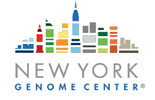Submitted by ja607 on
| Title | Complex mosaic structural variations in human fetal brains. |
| Publication Type | Journal Article |
| Year of Publication | 2020 |
| Authors | Sekar, S, Tomasini, L, Proukakis, C, Bae, T, Manlove, L, Jang, Y, Scuderi, S, Zhou, B, Kalyva, M, Amiri, A, Mariani, J, Sedlazeck, FJ, Urban, AE, Vaccarino, FM, Abyzov, A |
| Journal | Genome Res |
| Volume | 30 |
| Issue | 12 |
| Pagination | 1695-1704 |
| Date Published | 2020 12 |
| ISSN | 1549-5469 |
| Abstract | Somatic mosaicism, manifesting as single nucleotide variants (SNVs), mobile element insertions, and structural changes in the DNA, is a common phenomenon in human brain cells, with potential functional consequences. Using a clonal approach, we previously detected 200-400 mosaic SNVs per cell in three human fetal brains (15-21 wk postconception). However, structural variation in the human fetal brain has not yet been investigated. Here, we discover and validate four mosaic structural variants (SVs) in the same brains and resolve their precise breakpoints. The SVs were of kilobase scale and complex, consisting of deletion(s) and rearranged genomic fragments, which sometimes originated from different chromosomes. Sequences at the breakpoints of these rearrangements had microhomologies, suggesting their origin from replication errors. One SV was found in two clones, and we timed its origin to ∼14 wk postconception. No large scale mosaic copy number variants (CNVs) were detectable in normal fetal human brains, suggesting that previously reported megabase-scale CNVs in neurons arise at later stages of development. By reanalysis of public single nuclei data from adult brain neurons, we detected an extrachromosomal circular DNA event. Our study reveals the existence of mosaic SVs in the developing human brain, likely arising from cell proliferation during mid-neurogenesis. Although relatively rare compared to SNVs and present in ∼10% of neurons, SVs in developing human brain affect a comparable number of bases in the genome (∼6200 vs. ∼4000 bp), implying that they may have similar functional consequences. |
| DOI | 10.1101/gr.262667.120 |
| Alternate Journal | Genome Res |
| PubMed ID | 33122304 |
| PubMed Central ID | PMC7706730 |
| Grant List | R01 MH100914 / MH / NIMH NIH HHS / United States U01 MH106876 / MH / NIMH NIH HHS / United States U24 CA220242 / CA / NCI NIH HHS / United States UM1 HG008898 / HG / NHGRI NIH HHS / United States |




